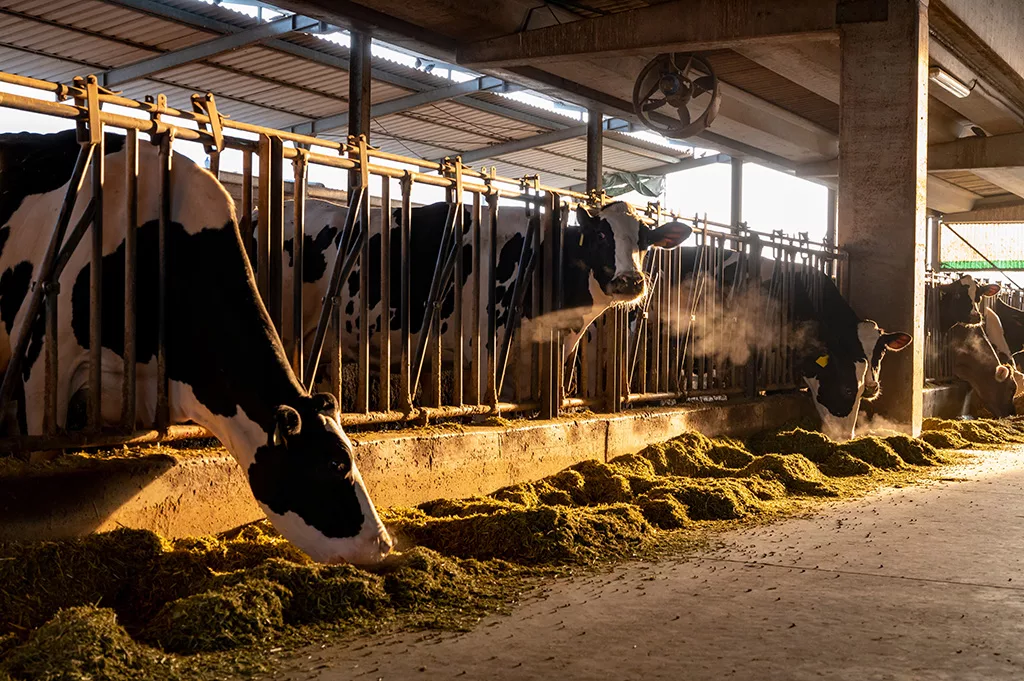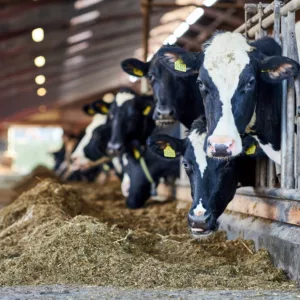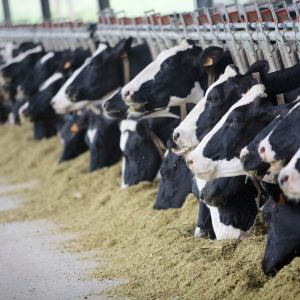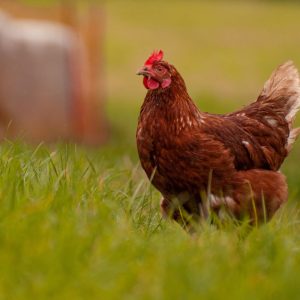Questions concerning low colostrum production are common throughout the year but are much more prevalent during the Fall. This phenomenon is not new, as our industry has dealt with this issue for the last 20+ years. We continue to hear questions from dairy producers, “We never saw these colostrum issues years ago,” “Why does it always happen during the Fall season?” “Is there something missing in the pre-fresh diet?” To answer these questions and provide effective on-farm solutions, we first need to start with what we do know.
We do know that photoperiod has a dramatic effect on colostrum production. Research has shown a highly significant effect on colostrum production as daylight decreases, with the lowest colostrum yield occurring in December, which has the shortest days of the year. On average, mature cows (2+ lactation) that calve in June produce 3X more colostrum than mature cows that calve in December. In fact, field studies report that up to 35% of mature cows give ZERO colostrum at calving during the month of December. Eventually, these cows will come into milk and early lactation milk production is not affected.
Since we cannot change seasonality and the associated photoperiod effect, what are the on-farm checkpoints that we need to closely evaluate when colostrum production is challenged:
- Pre-fresh Dry Matter Intake (DMI): Maintaining a high and consistent DMI is critical for fresh cow success and colostrum production. Factors that can negatively impact DMI include overcrowding, bunk management, TMR particle and moisture consistency, forage fermentation issues, molds and mycotoxins, too little time in the pre-fresh group, excess cow moves, etc. Work closely with your nutritionist and management team to identify and minimize these potential bottlenecks that may limit colostrum production.
- Pre-fresh Fiber Sources & Length: Dry cow and pre-fresh diets containing high levels of straw and/or grass hay have become common in the last 20 years due to higher and more consistent intakes that increase gut fill which results in better fresh cow health. With higher levels of straw/grass hay, comes the challenge of achieving a consistent particle size and optimal moisture level to minimize sorting. In addition, some straw/grass hay may contain potential antagonists that could interfere with the hormonal changes required for the initiation of colostrum synthesis and parturition.
- Pre-fresh Dietary & Management Compliance: Review the key nutrients essential for colostrum production with your nutrition team and management staff. Ensuring that a well-balanced diet is formulated and correctly implemented provides another opportunity for colostrum success.
- Adequate Water Access & Intake
- Optimizing Dietary Metabolizable Protein (MP) Levels:
- Consider increasing MP levels while maintaining the optimal level and ratio of the key amino acids, lysine, and methionine.
- Monitoring Energy Intake:
- Consider increasing dietary starch/sugar levels without sacrificing effective fiber intake.
- Assessing Vitamin & Mineral Supplementation:
- Highly bioavailable sources of trace minerals and vitamins are important to combat oxidative stress and enhance immune function.
- Dry Period Management: Field research from Cornell University shows that slightly longer dry periods and gestation lengths are correlated to higher colostrum yield. Are your days dry averaging closer to 60 days or 50 days? Dry periods of less than 50 days are associated with lower colostrum yield.
- Maternity Management: How long is the dam with the newborn calf? Does this alter the hormonal induction of colostrum? With today’s tight maternity protocols, consideration for if it makes sense to provide extra time for the dam and newborn calf may need to be examined.
References:
- Changes in biomarkers of metabolic stress during late gestation of dairy cows associated with colostrum volume and immunoglobulin content. 2023. R.M. Rossi, et al. Michigan State University. East Lansing, MI
- Epidemiology of bovine colostrum production in New York Holstein herds: Prepartum nutrition and metabolic indicators. 2023. J. Dairy Sci.106:4896–4905 T. A. Westhoff, et al. Cornell University, Ithaca NY
- Low colostrum yield in Jersey cattle and potential risk factors. 2018. J. Dairy Sci. 101:6388-6398 K. Gavin, et al. Washington State University, Pullman WA



